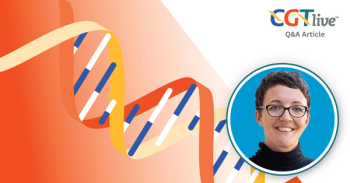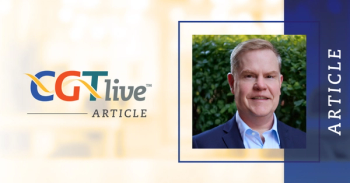
Low FVIII Expression After Val-Rox Gene Therapy Maintains Some Hemostatic Benefits
An analysis of participants from GENEr8-1 who had low transgene-derived Factor VIII expression was presented at ASH 2023.
Low levels of transgene-derived endogenous Factor VIII expression from valoctocogene roxaparvovec (val-rox; Roctavian, BioMarin) therapy still provided protective hemostatic benefits to patients with severe
Findings from a new analysis were presented at
“Val-rox is expected to transfer a functional FVIII coding sequence that would eliminate the need for regular prophylaxis for people with severe hemophilia A. At the same val-rox dose, FVIII levels varied among participants in the phase 3 GENEr8-1 trial. The protective effect of low transgene-derived FVIII is unknown,” Mahlangu and coauthors wrote in their abstract.
Mahlangu and colleagues conducted an analysis of participants with low FVIII activity from the open-label, single-arm, phase 3 GENEr8-1 trial (NCT03370913) with data from up to 3 years after gene therapy.GENEr8-1 treated 134 adult males with a single dose of 6x1013 vg/kg of val-rox, 131 of which completed the week 156 visit.
READ MORE:
Investigators found that the mean FVIII activity at week 156 was 18.2 IU/dL (standard deviation [SD], 30.6) and 46 of 134 (34.3%) had a median FVIII activity less than 5 IU/dL (range, 0 to 4.9 IU/dL) at 156 weeks. These 46 participants had a mean annualized bleeding rate (ABR) of 4.8 for treated spontaneous and traumatic bleeds at baseline (range, 0-27.5) and a mean ABR of 1.7 bleeds/year (range, 0-12.0)at week 156. Eight of these participants had FVIII activity between less than 1.5 and 4.5 IU/dL before returning to prophylaxis before week 156 (range, 58–141 weeks) and 38 did not return to prophylaxis before week 156. These 38 had median FVIII activity between 0 and 4.9 IU/dL at week 156. Three of the 8 participants and 15 of the 38 had FVIII of 0 IU/dL.
The 8 participants that resumed prophylaxis before week 156 had a baseline mean ABR for treated bleeds of 8.5 (range, 0.0-22.0) and the 38 that didn’t had a baseline mean ABR of 4.0 (range, 0-27.5). After the treatment but before returning to prophylaxis, the 8 participants had a mean treated ABR of 4.8 bleeds per year (range, 0.9-13.4) and the 38 participants had a mean treated ABR of 1.0 (range, 0-12.0).Two of the 8 had higher treated ABR after therapy compared to baseline as well as 5 of the 38.Most of the 38 had lower ABR for treated bleeds compared with baseline, low post-prophylaxis ABRs for treated bleeds, or no substantial treated spontaneous bleeds. Decisions to not RTP were based on multiple factors and informed by participant-investigator shared decision making.
“Most participants with low FVIII activity had low bleeding rates, suggesting that low endogenous FVIII expression may provide protective hemostatic benefits. Many participants who resumed prophylaxis had clinical presentation consistent with moderate hemophilia; the individual decision to RTP was multifactorial and influenced by FVIII activity, bleeding rates, desired physical activity levels, and personal preferences,” Mahlangu and colleagues wrote.
REFERENCE
Mahlangu J, Ozelo MC, Tan CW, et al. Bleeding Outcomes in Participants with Factor VIII Activity <5 IU/DL Post–Gene Transfer in GENEr8-1. Presented at: Presented at: ASH 2023 Annual Meeting & Exposition. December 9-12; San Diego, CA. Abstract #2250
Newsletter
Stay at the forefront of cutting-edge science with CGT—your direct line to expert insights, breakthrough data, and real-time coverage of the latest advancements in cell and gene therapy.































